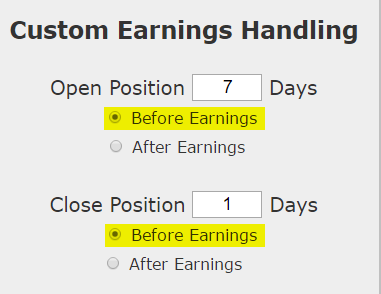The Momentum Pattern Forming Right Now in the Least Likely of Names -- Johnson & Johnson

Johnson & Johnson (NYSE:JNJ) : The Momentum Pattern Forming Right Now in the Least Likely of Names
Date Published: 2018-07-08
Disclaimer
The results here are provided for general informational purposes, as a convenience to the readers. The materials are not a substitute for obtaining professional advice from a qualified person, firm or corporation.Preface
While technology stocks have found a wave of volatility but, for the most part, maintained their bullish trend, the largest pharmaceutical company in the world has been plotting along an ugly stock trend until recently -- where it has found a leg up.With earnings due out on 2018-07-17 before the market opens, according to our data provider Wall Street Horizon, there is a bullish momentum pattern in Johnson & Johnson (NYSE:JNJ) stock 7 calendar days before earnings, and we can focus on it right now.
Seven-days before 2018-07-17 would be 2018-07-10. Here is an one-year chart for JNJ, and it's pretty ugly.

While that chart looks quite bearish, let's focus in on the last 3-months:

The Bullish Option Trade Before Earnings in Johnson & Johnson
We will examine the outcome of getting long a weekly out of the money (40 delta) call option in Johnson & Johnson 7-days before earnings (using calendar days) and selling the call before the earnings announcement.Here's the set-up in great clarity; again, note that the trade closes before earnings, so this trade does not make a bet on the earnings result.

RISK MANAGEMENT
We can add another layer of risk management to the back-test by instituting and 40% stop loss and a 40% limit gain. Here is that setting:
In English, at the close of each trading day we check to see if the long option is either up or down 40% relative to the open price. If it was, the trade was closed.
RESULTS
Since JNJ has such a rich history, we can actually look back over the last five-years:The mechanics of the TradeMachine® Stock Option Backtester are that it uses end of day prices for every back-test entry and exit (every trigger).
Track this trade idea. Get alerted for ticker `JNJ` 7 days before earnings
Setting Expectations
While this strategy had an overall return of 526%, the trade details keep us in bounds with expectations:➡ The average percent return per trade was 28.9% over each seven day period.
➡ The average percent return per winning trade was 64.9% over each seven day period.
➡ The average percent return per losing trade was -43.1% over each seven day period.
Back-testing More Time Periods in Johnson & Johnson
Now we can look at just the last year as well:
| JNJ: Long 40 Delta Call | |||
| % Wins: | 75.00% | ||
| Wins: 3 | Losses: 1 | ||
| % Return: | 152.8% | ||
Tap Here to See the Back-test
We're now looking at 152.8% returns, on 3 winning trades and 1 losing trades.
➡ The average percent return per trade was 39% over each seven day period.
➡ The average percent return per winning trade was 53.6% over each seven day period.
➡ The percent return for the losing trade was -4.7% over each seven day period.
Is This Just Because Of a Bull Market?
It's a fair question to ask if these returns are simply a reflection of a bull market rather than a successful strategy. It turns out that this phenomenon of pre-earnings optimism also worked very well during 2007-2008, when the S&P 500 collapsed into the "Great Recession."

The average return for this strategy, by stock, using the Nasdaq 100 and Dow 30 as the study group, saw a 45.3% return over those 2-years. And, of course, these are just 8 trades per stock, each lasting 7 days.
* Yes. We are empirical.
* Yes, you are better than the rest now that you know this.
* Yes, you are powerful for it.
WHAT HAPPENED
You can guess stock direction -- guess momentum -- guess anything. But there's a lot less luck to successful option trading than that -- and every professional trader knows it. To learn more watch this quick demonstration video:Tap Here to See the Tools at Work
Risk Disclosure
You should read the Characteristics and Risks of Standardized Options.
Past performance is not an indication of future results.
Trading futures and options involves the risk of loss. Please consider carefully whether futures or options are appropriate to your financial situation. Only risk capital should be used when trading futures or options. Investors could lose more than their initial investment.
Past results are not necessarily indicative of future results. The risk of loss in trading can be substantial, carefully consider the inherent risks of such an investment in light of your financial condition.
Please note that the executions and other statistics in this article are hypothetical, and do not reflect the impact, if any, of certain market factors such as liquidity and slippage.


